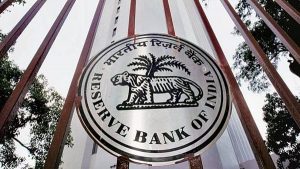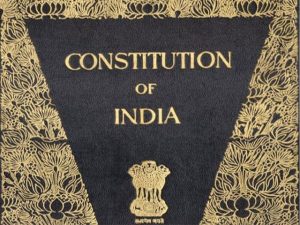Today’s Current Affairs: 2nd Mar 2024 for UPSC IAS exams, State PSC exams, SSC CGL, State SSC, RRB, Railways, Banking Exam & IBPS, etc
Table of Contents
Very Short-Range Air Defence System : Flight Test

The Defence Research and Development Organisation (DRDO) successfully conducted two flight tests of the Very Short-Range Air Defence System (VSHORADS) missile.
- Very Short-Range Air Defence System (VSHORADS) is a fourth-generation Man Portable Air Defence System (MANPAD) specially designed to counter low-altitude aerial threats over short distances.
- These are short-range, lightweight, and portable surface-to-air missiles that can be fired by individuals or small groups.
- It has been designed and developed indigenously by DRDO’s Research Centre Imarat (RCI), Hyderabad, in collaboration with other DRDO laboratories and Indian industry partners.
- It is designed to provide short-range air defence capabilities to protect ground forces and critical assets from aerial threats, including helicopters and low-flying aircraft.
- It has a range of up to 6-km.
- The missile incorporates many novel technologies, including a Dual-band IIR Seeker, a miniaturised Reaction Control System, and integrated avionics.
Juice Jacking:

The Reserve Bank of India (RBI) has issued a cautionary message to mobile phone users about juice jacking.
- Juice jacking was first coined in 2011 by investigative journalist Brian Krebs.
- It is a form of cyberattack where a public USB charging port is tampered with and infected using hardware and software changes to steal data or install malware on devices connected to it.
- The attack is used by hackers to steal users’ passwords, credit card information, addresses, and other sensitive data stored on the targeted device.
- This type of attack has been a growing concern, with incidents reported in various public spaces such as airports, hotels, and shopping centres.
- RBI emphasised the importance of protecting personal and financial data while using mobile devices.
Doomsday Glacier:

Unveiling new details about Antarctica’s “Doomsday Glacier”, scientists have revealed that the Thwaites Glacier has been losing ice since the 1940s.
- Doomsday Glacier also known as the “Doomsday Glacier,” is located in the remote Amundsen Sea in West Antarctica.
- It’s a wide and fast-flowing glacier, roughly the size of Florida or Great Britain, and it has been a significant focus of scientific study due to its sensitivity to climate change.
- Satellite measurements have shown that the glacier is losing an enormous amount of ice each year, nearly 50 billion tons annually, contributing to rising global sea levels. The glacier already contributes 4% of global sea level rise.
- If the entire Thwaites Glacier were to melt, it could raise the world’s oceans by about 65 centimeters (over 2 feet).
- It also acts as a buffer, holding back neighboring glaciers that contain around three meters of potential sea level rise.
- A critical concern is that much of Thwaites sits on land that is below sea level, in a configuration known as “marine-based.”
Vikramaditya Vedic Clock : Inaugurated By Prime Minister Narendra Modi

The Prime Minister recently inaugurated the Vikramaditya Vedic Clock, which is mounted on an 85-foot tower within Jantar Mantar in Ujjain.
- Vikramaditya Vedic Clock is the world’s first ‘Vedic Clock’, designed to display time according to the ancient Indian traditional Panchang (time calculation system).
- It has been positioned on an 85-foot tower within Jantar Mantar in Ujjain, Madhya Pradesh.
- It also provides information on planetary positions, Muhurat, astrological calculations, and predictions.
- It also indicates Indian Standard Time (IST) and Greenwich Mean Time (GMT).
- The clock will calculate time from one sunrise to another.
- The period between the two sunrises will be divided into 30 parts, whose one hour consists of 48 minutes, according to ISD.
- The reading will start from 0:00 with the sunrise functions for 30 hours (an hour of 48 minutes).
- It has been developed by Lucknow-based Sanstha Arohan, using digital interventions, enabling it to be connected to the internet and provide a wide range of features through a mobile app named after the clock.
Melanochlamys Droupadi : New Species Of Head-Shield Sea Slug

Researchers of the Zoological Survey of India (ZSI) recently discovered a new species of head-shield sea slug from Odisha and the West Bengal coast named ‘Melanochlamys Droupadi’.
- Melanochlamys Droupadi is a new marine species of head-shield sea slug with ruby red spot.
- This species belonging to Melanochlamys genus was discovered from Digha of West Bengal coast and Udaipur of Odisha coast.
- It is a small invertebrate with a maximum length of up to 7 mm.
- It inhabits wet and soft sandy beaches.
- It is brownish black in colour with a ruby red spot in the hind end.
- This particular species of sea slug is hermaphrodite (having both male and female reproductive parts); however, they need another sea slug for reproduction.
- It has a shell inside the body. It has a posterior, accounting for 61 percent of its body length.
- It continuously secretes transparent mucus to form a sheath that prevents sand grains from entering parapodial space.
- It crawls beneath smooth sand to form a moving capsule where the body is rarely visible, leaving behind a trail like a turtle.
- Sea Slugs are a group of molluscs that live primarily in marine habitats and are slug-like.
- They can be found from the shallow intertidal to the deep sea and from the polar regions to the tropics.
- The sea slugs are rapid hunters and feed upon mobile prey such as other shelled and unshelled sea slugs, roundworms, marine worms, and small fishes.
New Spaceport At Kulasekarapattinam:

The Prime Minister recently laid the foundation stone for a new spaceport at Kulasekarapattinam in southern Tamil Nadu.
- It is a new spaceport coming up at Kulasekarapattinam, a coastal hamlet near the temple town of Tiruchendur in Thoothukudi district in southern Tamil Nadu.
- It will be second after the space agency’s existing Satish Dhawan Space Centre, founded in Andhra Pradesh’s Sriharikota in 1971, with two launch pads.
- It will focus on the launch of Small Satellite Launch Vehicles (SSLVs) on a commercial basis.
- It will house 35 facilities, including a launch pad, rocket integration facilities, ground range and checkout facilities, and a mobile launch structure (MLS) with checkout computers.
- It would have the capacity to launch 24 satellites per year using a mobile launch structure.
- Spread over 2,350 acres, the Kulasekharapatnam spaceport will help save fuel for small rocket launches as the port can launch rockets directly south over the Indian Ocean without requiring crossing landmasses.
- This is unlike the existing launch site at the Satish Dhawan Space Centre, which adds more fuel requirements for launching into a polar orbit as rockets need to follow a curved path to the south to avoid Sri Lanka’s landmass.
- It is estimated to cost Rs. 986 crore.
Article 25 Of Indian Constitution:

The Kerala High Court recently observed that the fundamental right under Article 25 of the Constitution to enter a temple for worship does not give the right to any member of the Hindu community to perform the role of Archakas (priests).
- Article 25 says that all persons are equally entitled to freedom of conscience and the right to freely profess, practice, and propagate religion.
- The implications of these are:
- Freedom of conscience: Inner freedom of an individual to mould his relation with God or Creatures in whatever way he desires.
- Right to profess: Declaration of one’s religious beliefs and faith openly and freely.
- Right to practice: Performance of religious worship, rituals, ceremonies, and exhibition of beliefs and ideas.
- Right to propagate: Transmission and dissemination of one’s religious beliefs to others or exposition of the tenets of one’s religion.
- But it does not include the right to convert another person to one’s religion. Forcible conversions impinge on the ‘freedom of conscience’ guaranteed to all persons alike.
- Thus, Article 25 covers not only religious beliefs (doctrines) but also religious practices (rituals).
- Moreover, these rights are available to all persons–citizens as well as non-citizens.
- However, these rights are subject to public order, morality, health, and other provisions relating to fundamental rights.
- Further, nothing in this article shall affect the operation of any existing law or prevent the State from making any law to:
regulate or restrict any economic, financial, political, or other secular activity associated with religious practice;
provide for social welfare and reform, or throw open Hindu religious institutions of a public character to all classes and sections of Hindus;




